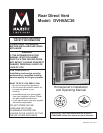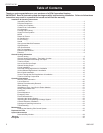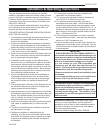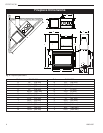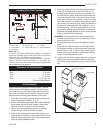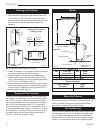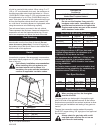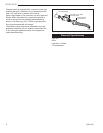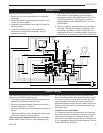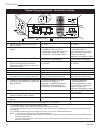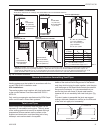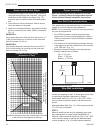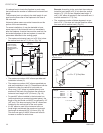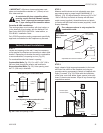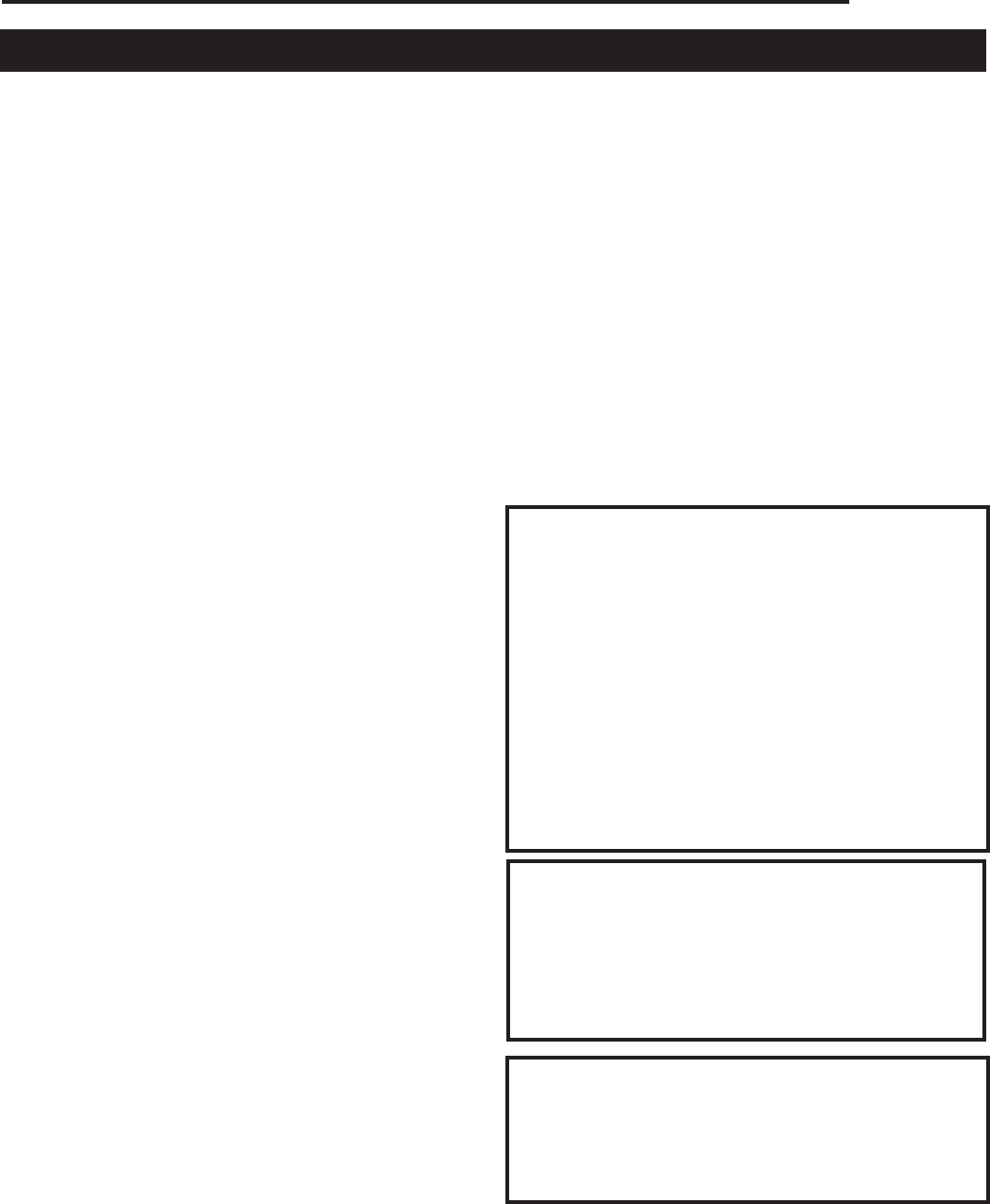
3
DVHVAC36
10001195
IMPORTANT:
PLEASE REVIEW THE FOLLOWING CAREFULLY
It is normal for fireplaces fabricated of steel to give off
some expansion and/or contraction noises during the
start up or cool down cycle. Similar noises are found
with your furnace heat exchanger or car engine.
It is not unusual for your CFM Corporation gas
fireplace to give off some odor the first time it is
burned. This is due to the curing of the paint and any
undetected oil from the manufacturing process.
Please ensure that your room is well ventilated - open
all windows.
It is recommended that you burn your fireplace for at
least ten (10) hours the first time you use it.
This gas fireplace should be installed by a qualified
installer in accordance with local building codes and with
current CSA-B149.1 Installation codes for Gas Burning
Fireplaces and Equipment. For U.S.A Installations follow
local codes and/or the current National Fuel Gas Code.
ANSI Z223.1/NFPA 54.
In the Commonwealth of Massachusetts, all gas fitting
and installation of this heater shall only be done by a
licensed gas fitter or licensed plumber.
FOR SAFE INSTALLATION AND OPERATION PLEASE
NOTE THE FOLLOWING:
1. This fireplace gives off high temperatures and should
be located out of high traffic areas and away from
furniture and draperies.
2. Children and adults should be alerted to the hazards
of the high surface temperatures of this fireplace and
should stay away to avoid burns or ignition of clothing.
3. Children should be carefully supervised when they are
in the same room as your fireplace.
4. Under no circumstances should this fireplace be modi
-
fied. Parts removed for servicing should be replaced
prior to operating this fireplace again.
5. Installation and any repairs to this fireplace should
be carried out by a qualified service person. A profes
-
sional service person should be contacted to inspect
this fireplace annually. Make it a practice to have all of
your gas fireplaces checked annually. More frequent
cleaning may be required due to excess lint and dust
from carpeting, bedding material, etc.
6. Control compartments, burners and air passages in
this fireplace should be kept clean and free of dust
and lint. Make sure that the gas valve and pilot light
are turned off before you attempt to clean this fire-
place.
7. The venting system (chimney) of this fireplace should
be checked at least once a year and if needed your
venting system should be cleaned.
8. Keep the area around your fireplace clear of combusti
-
ble materials, gasoline and other flammable vapor and
liquids. This fireplace should not be used as a drying
rack for clothing, nor should Christmas stockings or
decorations be hung in the area of it.
9. Under no circumstances should any solid fuels (wood,
coal, paper or cardboard etc.) be used in this fire
-
place.
10. The flow of combustion and ventilation air must not
be obstructed in any way.
11. Whether the fireplace is installed directly on
carpeting, vinyl tile or any combustible material other
than wood, this fireplace must be installed on a metal
or wood panel extending the full width and depth of
the fireplace.
Installation & Operating Instructions
The appliance may be installed in an aftermarket
permanently located, manufactured (mobile) home,
where not prohibited by local codes.
This appliance is only for use with the type of gas
indicated on the rating plate. This appliance is not
convertible for use with other gases unless a certi-
fied kit is used.
Proposition 65 Warning: Fuels used in gas, wood-
burning or oil fired appliances, and the products of
combustion of such fuels, contain chemicals known to
the State of California to cause cancer, birth defects
and other reproductive harm.
California Health & Safety Code Sec. 25249.6
12. This fireplace requires adequate ventilation and
combustion air to operate properly.
13. The unit must be adjusted to obtain a temperature
rise of 25-55°F, at maximum input rate.
14. The fireplace must be electrically grounded in
accordance with local codes. In the United States,
all electrical and grounding must also conform to the
current National Electric Code, ANSI/NFPA No. 70. In
Canada, all electrical and grounding for the unit must
also conform to the current Canadian Electrical Code
Part 1, CSA Standard C22.1
15. Field wiring to the appliance must meet or exceed
the specifications for type T wire and must withstand a
minimum of 180°F temperature rise.
16. Service access must be provided for the service and
replacement of the blower motor, air filter etc. The use
of CFM Corporation mantels designed for this product
is recommended.



